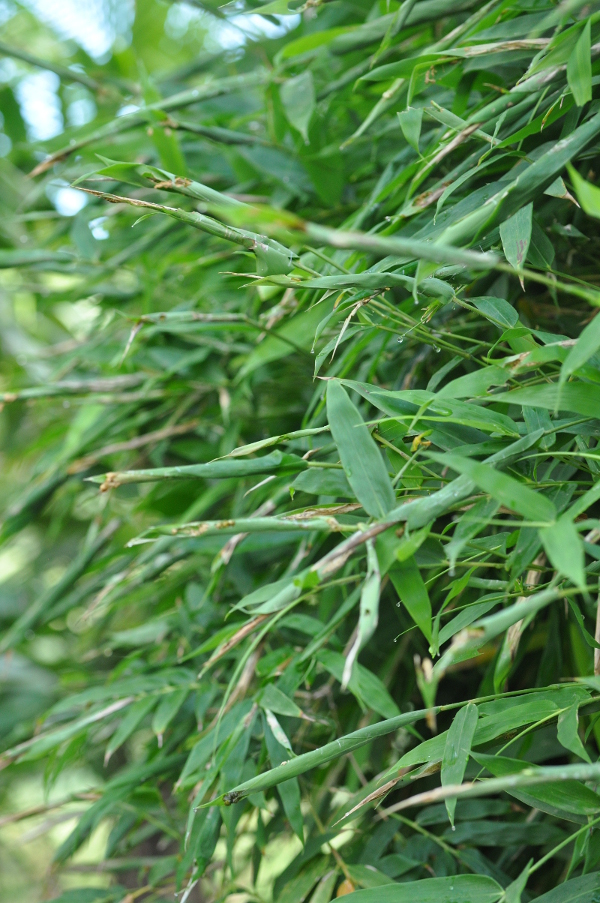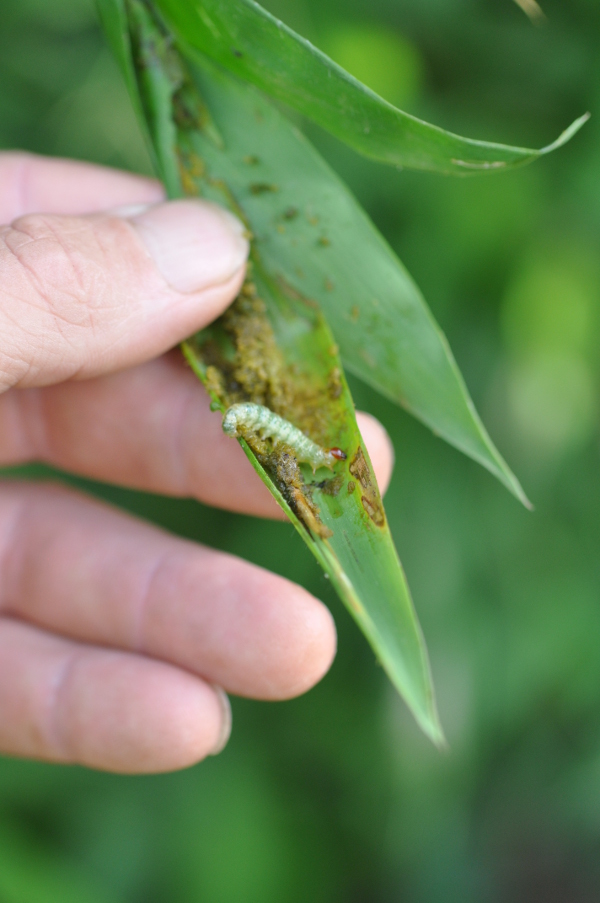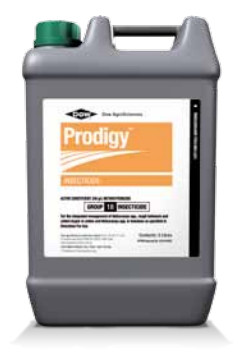Bamboo leaf-roller caterpillar / moth
This is a caterpillar which will turn into a moth. The caterpillar will roll up the new emerging leaves at the tip of a branch in order to protect itself from predators. Since its eating the new growth of the bamboo, if infestation is severe enough it can cause reduced growth rate of the bamboo due to decreased photosynthesis.
Usually however, its not decreased growth rate that is the biggest problem, its more to do with the physical appearance of the bamboo. With many of the leaves rolled up, it will cause the bamboo to look quite unsightly.

Leaves of the bamboo are rolled up by sticky webbing

Un-rolling the leaf will expose the caterpillar
Pest problem is throughout summer and autumn when new leaves are emerging. Some years seem to be worse that others.
Once the caterpiller / larvae is fully grown (2 to 4 weeks of feeding), it will drop to the ground, burrow into the surface and pupate.
There are natural predators such as birds, spiders, ants and parasites which keep leaf-roller numbers in check, however natural enemies are often unable to control the pest fully.
So, what to do...
If only a few leaf rollers are evident on young plants, then its best to simply unroll the leaf and squish the culprit. If damage is extensive on lower growing plants, hedges, or potted plants, then insecticidal sprays can be used.

The best chemical to use is one called Prodigy containing Methoxyfenozide. In a nursery environment, it should be mixed at 20ml per 10 litre of water for effective control, and sprayed on to point of run-off. It is best applied in conjuction with an adjuvant/sticker like Bond (at a rate of 10mL per 10 litres), which causes the insecticed to stick to the leaves for a longer period of time. Repeat treament may be required every month or two during growth season.
The benefit of using Prodigy versus other inseticides is that it has no effect on beneficial insects and low toxicity to mammals / humans.
